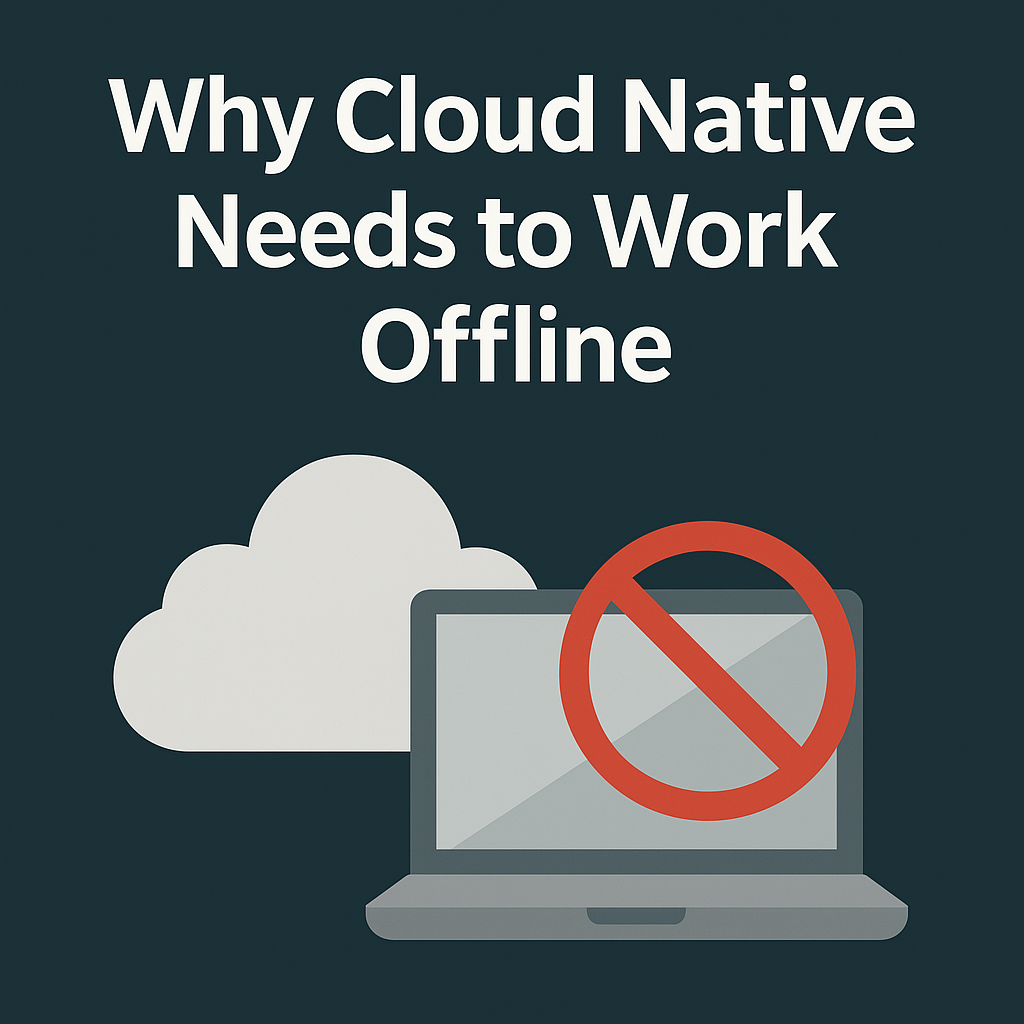
Welcome to the first post in my Cloud Native Airgap Fundamentals series.
If you’re reading this, odds are you’ve been burned by a dependency you didn’t even know you had.
A Helm chart that fetched something from an external source or had sub-charts. A Kubernetes deployment that pulled an image at runtime. (IE Operator) A pipeline that silently relied on a cloud API to fetch secrets. A security application that requires centralized data retrieval for operation.
It works until it doesn’t. And when it really matters, that’s not good enough.
Build like you won’t have connectivity
If you’ve ever tried to do a live demo over conference WiFi, you probably already understand.
It happens all the time:
- Live image pulls that timed out
- DNS failures in hotel networks
- Monitoring dashboards that refused to load
- Git-based automation that silently failed because of token expirations
But here’s the thing: this isn’t just about conference networks.
It’s about airgapped systems, forward operating bases, spacecraft, and critical infrastructure.
It’s about systems that have to work, even when they’re disconnected by design.
These environments aren’t edge cases
Disconnected environments aren’t just a curiosity. They’re operational requirements in:
- Defense and national security
- Regulated financial or health systems
- Remote scientific operations
- Space-based systems
- Industrial infrastructure with hard safety cutouts
- IoT and edge systems with minimal connectivity
The software still needs to work. The difference? You don’t get to “just pull that image again” or “re-run the deploy.”
There’s no “try again with better bandwidth.”
What breaks when you’re offline?
Let’s be clear - a lot of cloud native tooling assumes connectivity.
Here’s what typically falls apart:
- Image pulls from a centralized Registry
- Helm charts hosted in GitHub repos
- Terraform modules that live upstream
- Vault lookups to external KMS
- SaaS-based monitoring
- GitOps systems that need GitHub/GitLab to be reachable
- OAuth tokens or cloud identity integrations
You don’t have to be deploying to a submarine to hit these issues. I’ve seen them fail in perfectly good environments when someone misconfigured a proxy or other network setting.
What if we designed like disconnection was the default?
When we treat disconnection as a design constraint, we’re forced to ask better questions:
- Does this app need to fetch anything at runtime?
- Can we bundle everything it needs: images, data, charts, policies?
- Can it degrade gracefully if connectivity drops mid-deploy?
- Does our automation work without external dependencies?
Here’s the thing: designing for disconnection makes every system more resilient - even the connected ones.
Reframing cloud native
Let’s break it down.
| Traditional Cloud Native | Disconnected-Aware Design |
|---|---|
| Always pull from remote | Mirror or bundle all dependencies |
| SaaS everything | Self-host core telemetry/logs |
| CI/CD assumes connectivity | CI builds, CD works offline |
| Runtime fetches | Immutable and reproducible builds |
| GitOps assumes GitHub | Local Git or Git mirroring |
This isn’t regression. It’s maturity.
You still get GitOps, observability, containerization — just without the fragile, implicit coupling to the cloud.
You don’t have to be airgapped to benefit
One of the best things about building like this is that it helps everyone:
- Fewer moving parts = faster MTTR
- Bundled deployments = repeatable outcomes
- Offline docs = teams aren’t blocked when things go sideways
- Self-contained monitoring = fewer blind spots
It doesn’t matter if you can connect - what matters is that you don’t have to.
Summary
Designing for disconnection makes your systems more resilient - even when the internet is available.
If your deployment depends on a live internet connection, it’s a liability.
If your CI pipeline can’t produce a standalone artifact, it’s fragile.
If your observability stack disappears when your VPN flakes - you’ve got a problem.
So ask yourself:
- Can I deploy this without connectivity?
- Can I debug it without SaaS dashboards?
- Can I prove it works offline?
If not - maybe it’s time to build like you’re airgapped. Not because you are, but because one day you might be.
Want to learn more?
- Check out the Zarf project
- Join us in the Kubernetes Slack in
#zarf - Or reach out on social—always happy to jam on disconnected infra